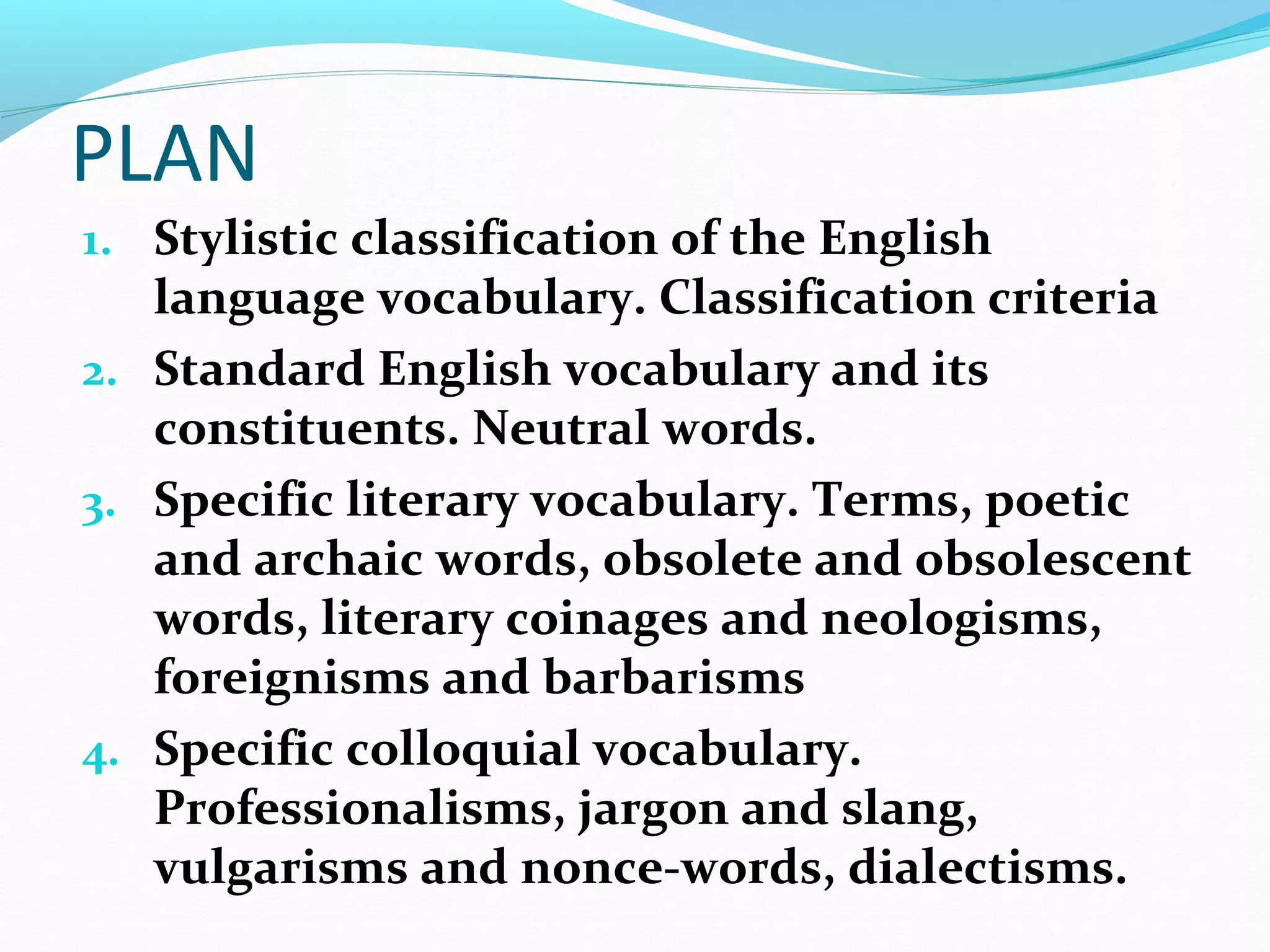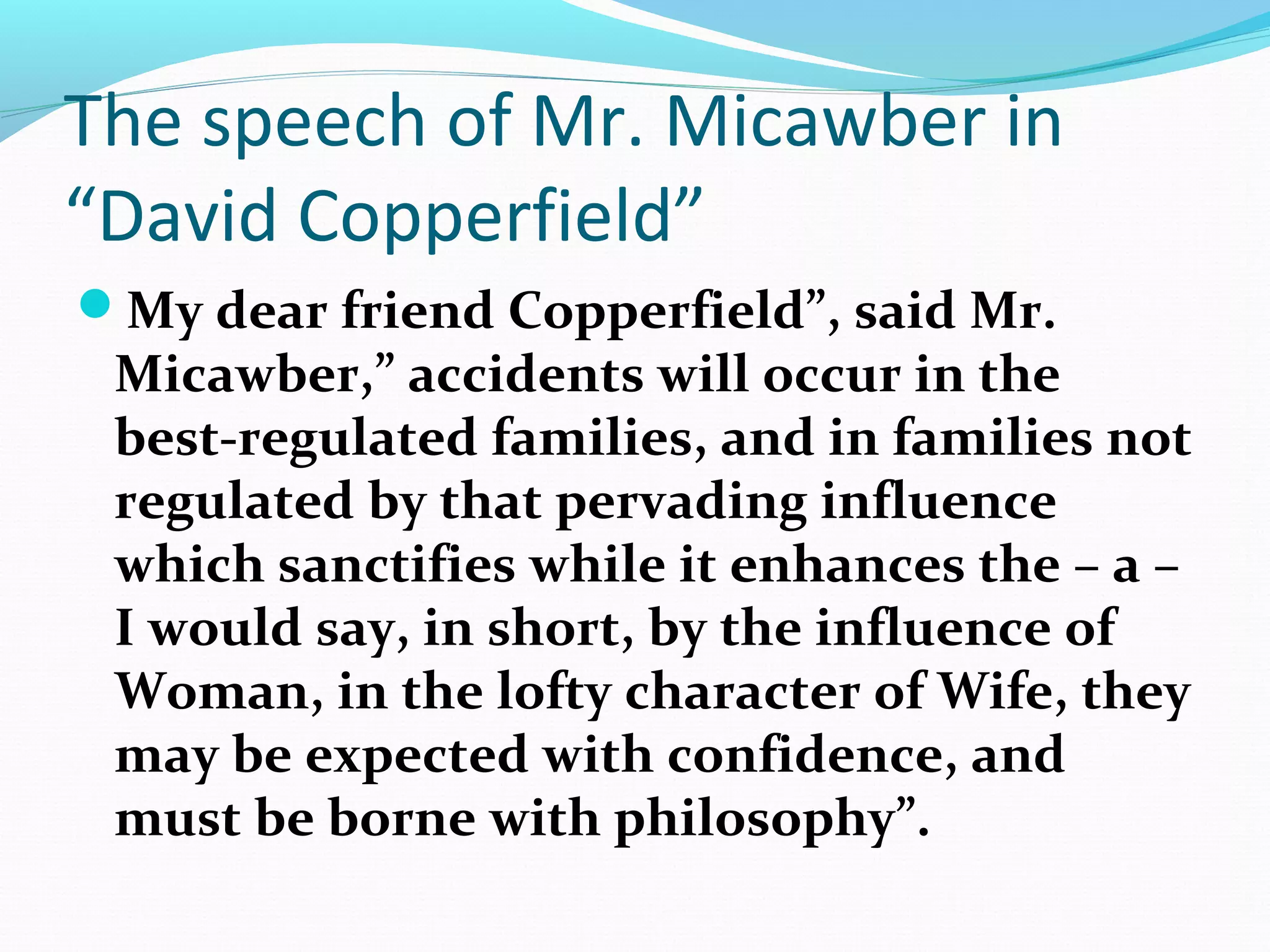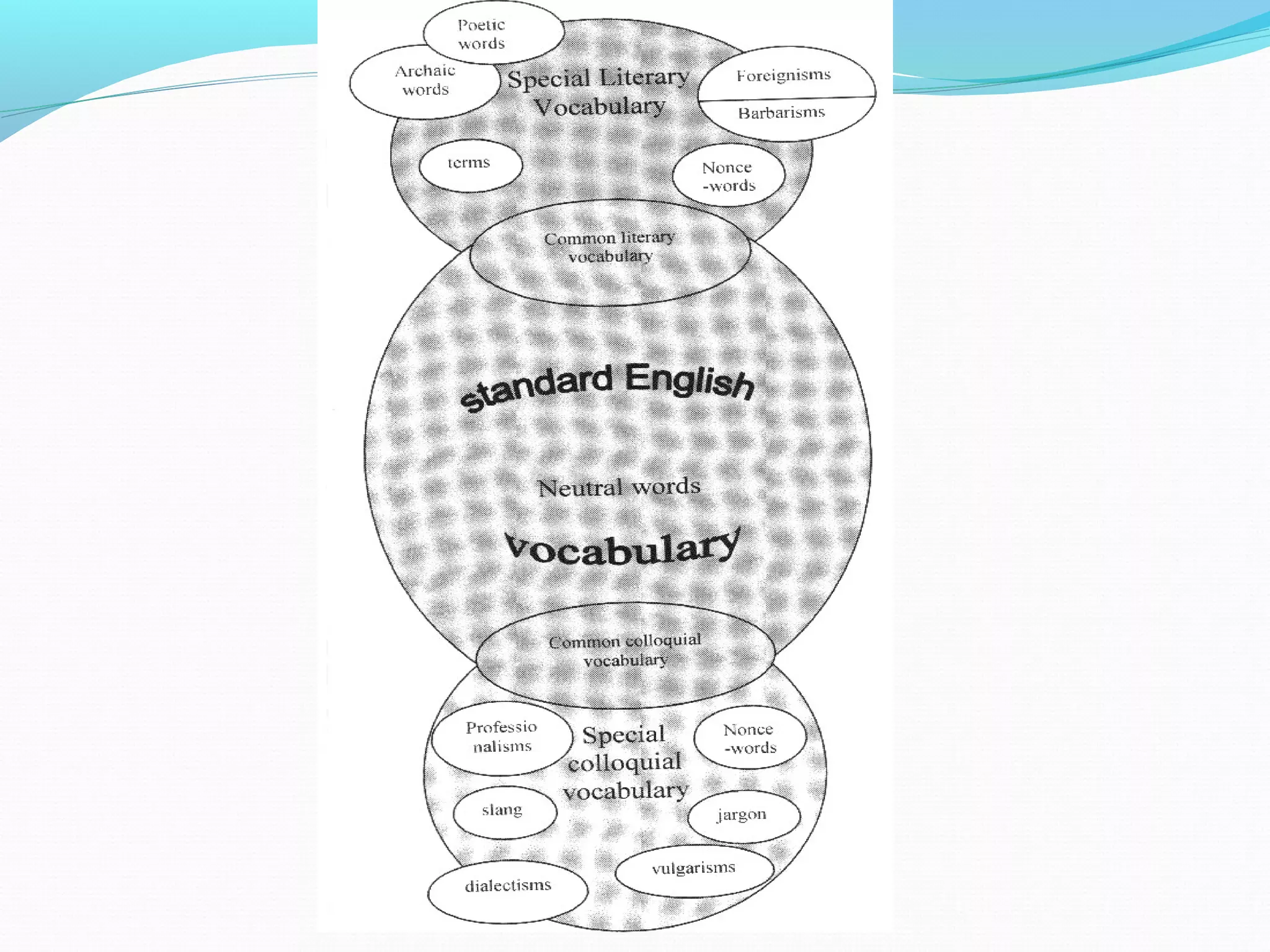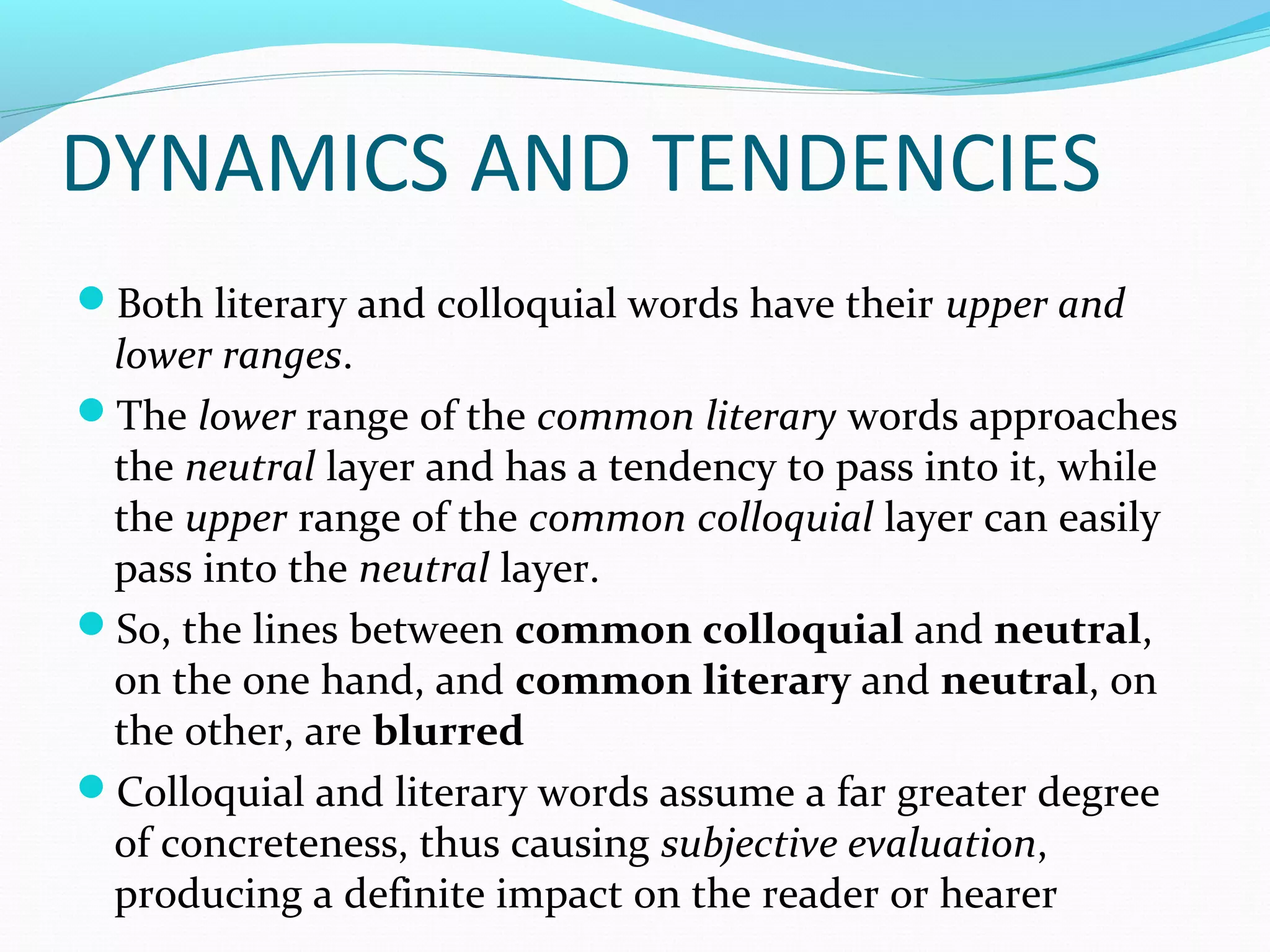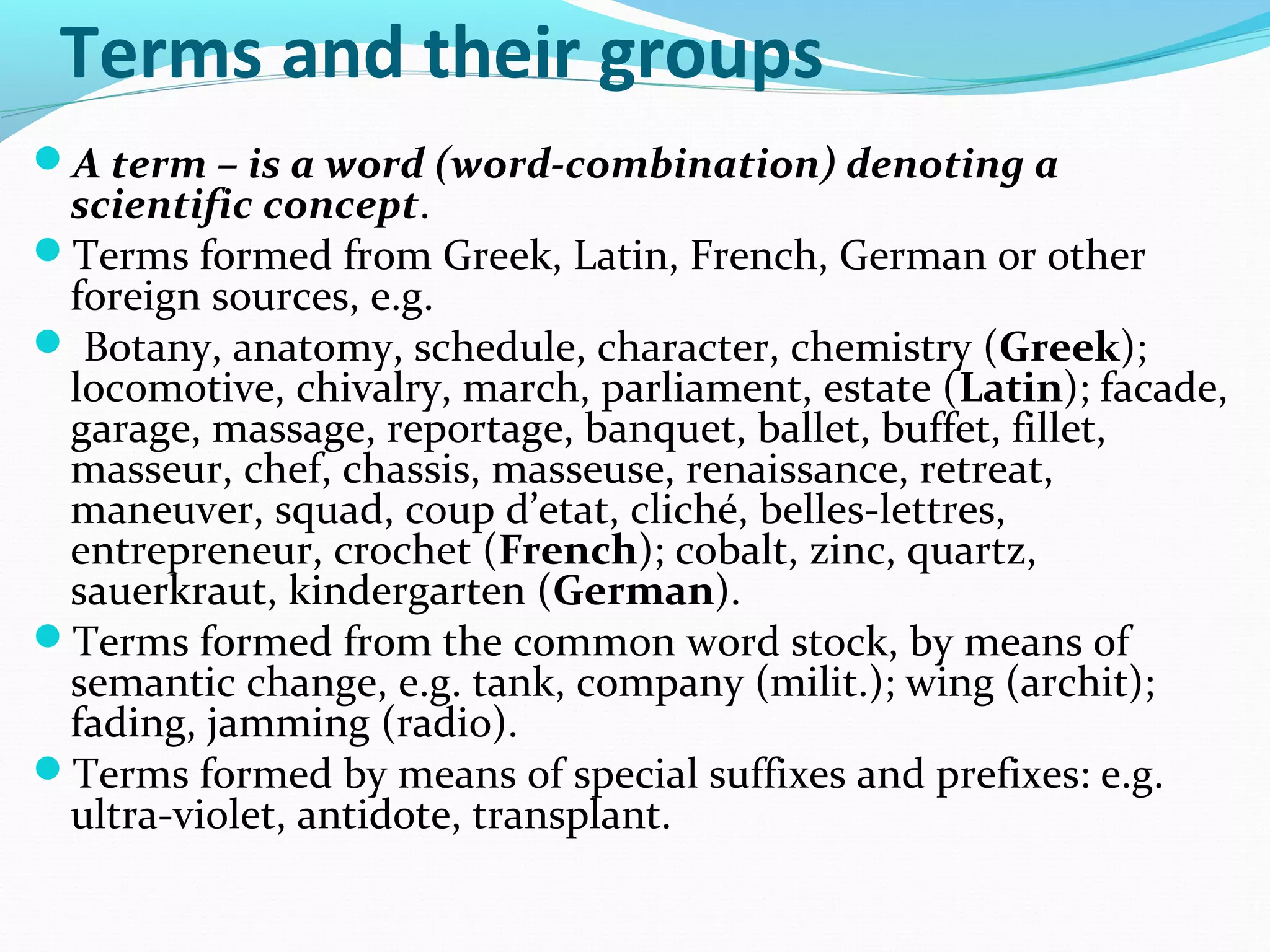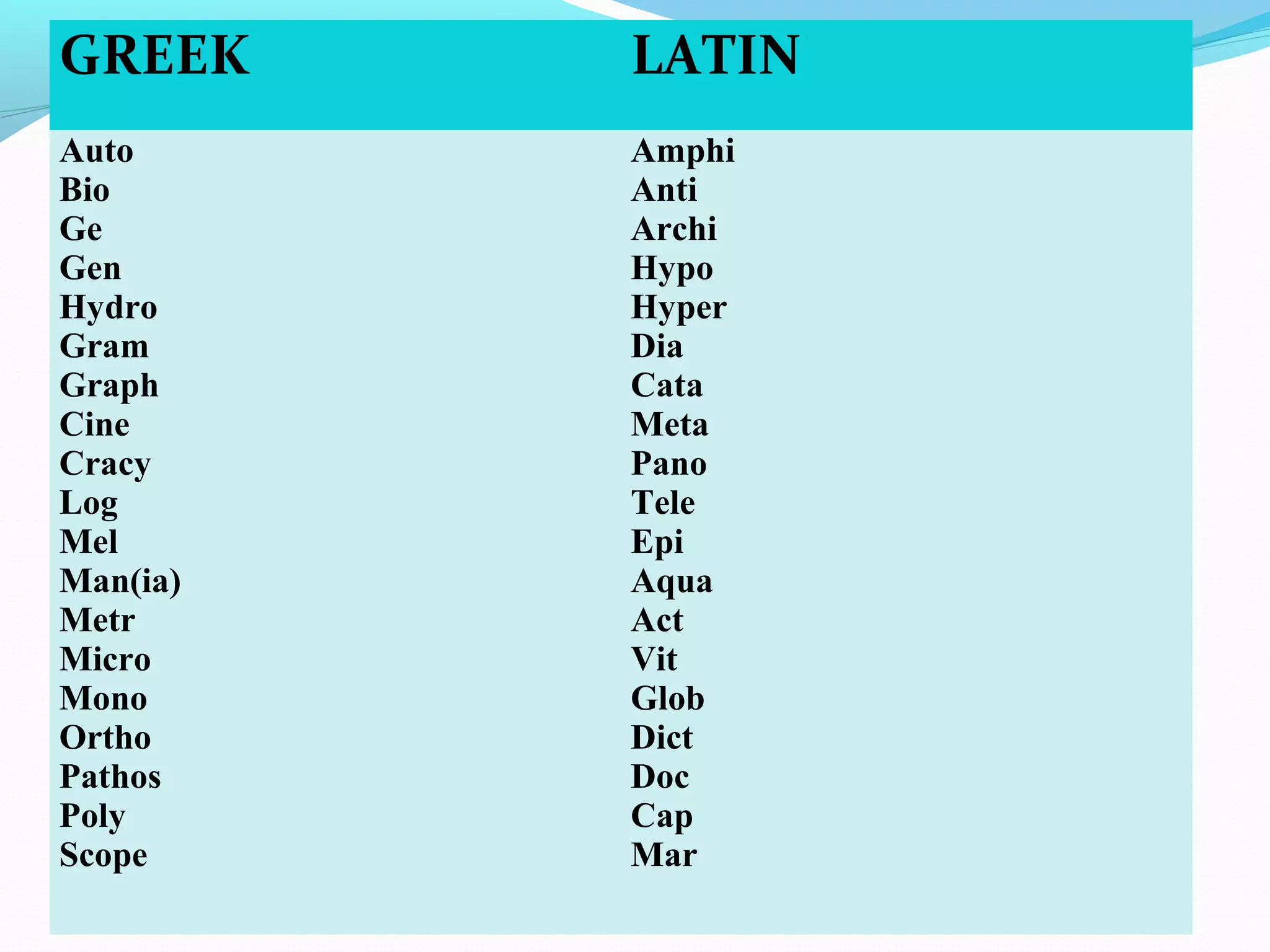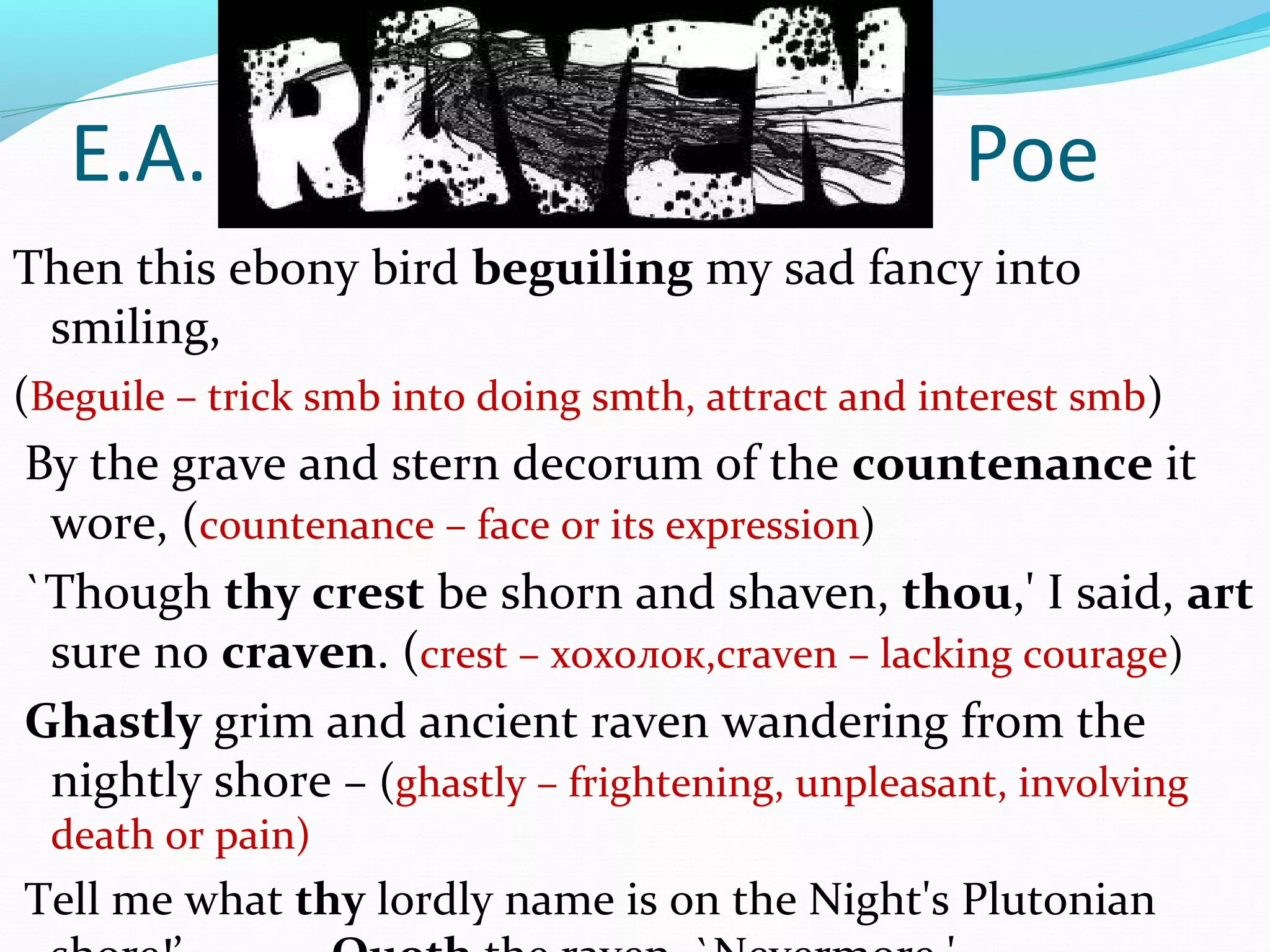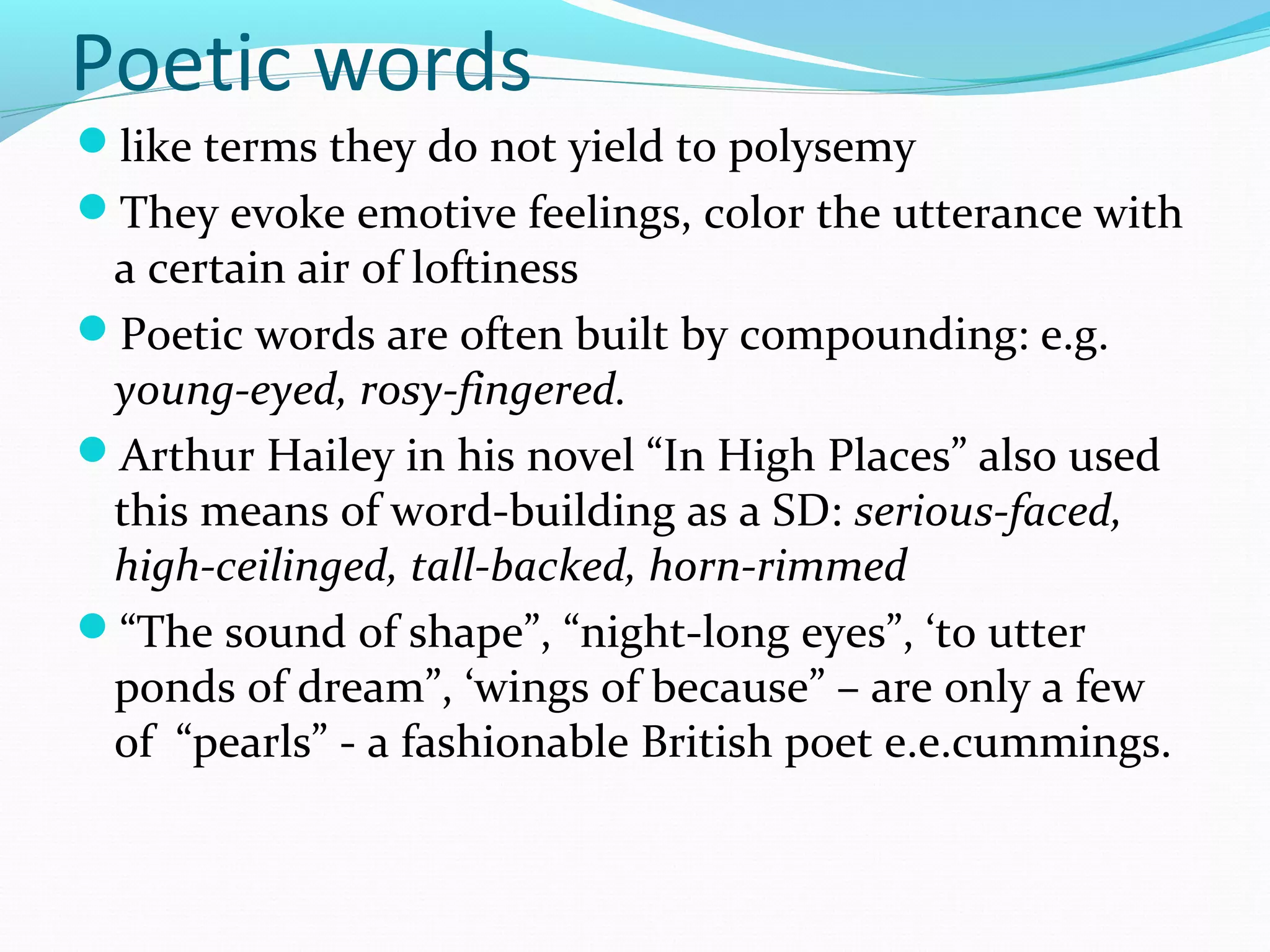This document discusses the stylistic classification of words in the English vocabulary. It is divided into three main layers: the literary layer, neutral layer, and colloquial layer. The literary layer contains terms, poetic words, archaic words, and foreignisms. These words are stable and used in written speech. The colloquial layer contains slang, dialects, vulgarisms and unstable words used in spoken communication. Most of the English vocabulary is made up of neutral words that can be used across both literary and colloquial styles. Synonyms differ in their emotional and social connotations. Words can transition between these layers over time.

